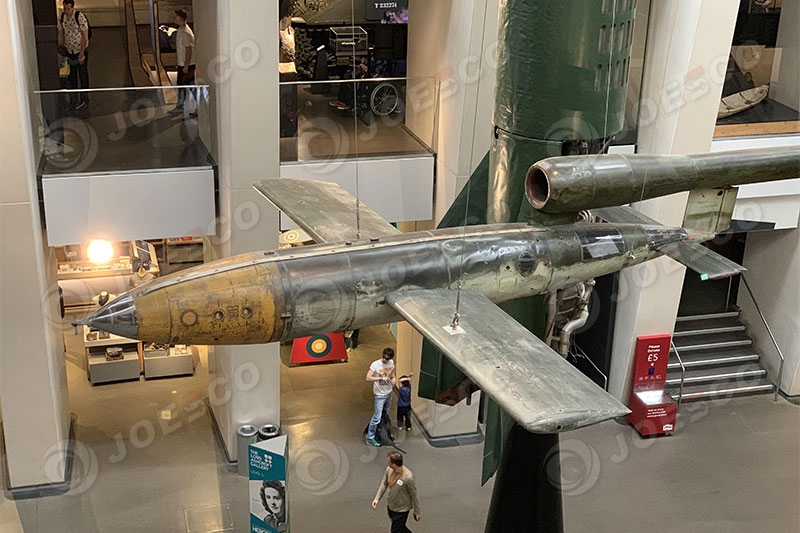During World War II, the German air force, known as the Luftwaffe, unleashed a mysterious “phantom” as if emerging from the dark abyss. It was the unmanned aerial vehicle called the “V – 1 missile,” also known as the “flying bomb.” The V – 1 was a pioneer in the realm of cruise missiles. It was like a cold – blooded, self – driven assassin that could fly unwaveringly towards its target without the need for a pilot. In the later stages of the war, the Germans used it as a “trump card” to attack British cities, especially London, with unrelenting “floggings.”

The V – 1 was not a complex and dazzling aircraft. It was equipped with a basic pulse jet engine, which was like an indefatigable “little motor,” propelling it to “speed” at about 400 miles per hour. Its outstretched wings spanned 17 feet, and its fuselage was just over 25 feet long. The V – 1 carried a 2,000 – pound “egg of death” – the warhead. Before running out of fuel and crashing, it could fly as far as 200 miles. It “leaped” from a launch ramp or catapult and then, relying on a gyroscopic autopilot that was like a wise navigator, precisely “rushed” towards the target.
In June 1944, during the Normandy landings, the Germans first released this “war demon” – the V – 1 missile. It roared out from a launch site in France, aiming straight for the port of Southampton in England. However, this attack was like a disastrous performance. Many missiles were mercilessly shot down by the British anti – aircraft fire, just like swatting flies, and some others, like lost lambs, missed their targets. But soon, the V – 1 transformed into the “ace” in the Germans’ arsenal and was used in large numbers to attack London and other cities.
On June 13, 1944, the “terror – attacking journey” of the V – 1 against London kicked off and lasted for months. During this period, the Germans launched over 10,000 V – 1 missiles towards Britain, and about 2,400 of them hit London. These attacks were like violent storms, bringing extensive damage to London and mercilessly claiming thousands of lives. But to the Germans’ disappointment, the heroic British people were not intimidated by this “demon’s roar.” Their morale was as firm as a rock.
In the face of the V – 1 attacks, the British quickly counterattacked, like a heroic knight facing a dragon’s challenge. They took a series of countermeasures. One of them was to send out fighter planes, which were like agile falcons, intercepting and shooting down the missiles in the air. The British also developed a magical device called the “Y – Gerat.” It was like a sensitive ear that could capture the sound of the V – 1’s engine and help determine its flight trajectory. Subsequently, this information was used to guide the anti – aircraft guns, making the anti – aircraft guns like accurate shooters, firing towards the missile’s flight path, greatly increasing the probability of hitting the missile.
In addition to these, the British also launched a bombing campaign against the V – 1 launch sites in France, like a fierce storm sweeping through. The aim was to destroy the Germans’ ability to launch missiles and smash their “evil lairs.” This bombing campaign was highly effective. By September 1944, the Germans, like defeated rats, were forced to abandon their V – 1 bases in France.
Despite the certain success of the British countermeasures, the V – 1 missile remained a highly threatening “demon.” In response to the bombing of their launch sites, the Germans began to use mobile launchers, which were like phantoms and could launch missiles from anywhere. This made the missiles even more difficult to detect and intercept, and the attacks continued until the end of the war in Europe in May 1945.
As an early guided missile, the V – 1 missile was like a milestone on the path of military technology development. The Germans’ use of it during World War II was like a bolt of lightning, illuminating the huge potential of unmanned aerial vehicles in the military field and “rolling out the red carpet” for the development of more advanced missiles in the following decades.











